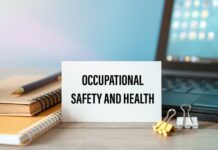
The Honourable Colin E Jordan M.P.
Minister of Labour, Social Security and Third Sector
World Day for Safety and Health at Work 2022
LET’S ACT TOGETHER TO BUILD A POSITIVE SAFETY AND HEALTH CULTURE
The inaugural World Day for Safety and Health at Work (2003) focused on social dialogue as key to attaining occupational safety and health goals. Nineteen years later, the chosen theme “Act together to build a positive safety and health culture” shows that social dialogue remains integral to the provision decent work in the context of a safe and harmonious workplace. This year’s theme was chosen by the International Labour Organization (ILO), not only highlight but to solidify in our minds, the role that consultation, social dialogue and participation play in creating a positive safety and health culture.
Safety culture is the beliefs, the perceptions and the values that are jointly shared by employers and employees in relation to the hazards and risks that exist in the workplace; and determines the attitudes and behaviours of people in the organisation. Where a positive safety culture exists the company’s vision includes safety, leadership is involved, employees at all levels are included, and there are defined responsibilities. A positive safety culture is built on accountability, open communication and a positive reporting system. There is also a supportive environment and a strong commitment to continuous development and improvement.
Consultation is an important component in this continuous improvement and plays a significant role in getting the buy-in of all employees. The Safety and Health at Work Act at Section 103, specifies that employers and employees must engage in joint consultation to address the management of occupational safety and health matters through establishing a safety committee or the appointment of safety delegates where there are less than 25 employees. A joint committee comprises an equal number of employer and employee representatives. Effective committees develop and thrive when participation by employers and employees result in meaningful collaboration, marked by open communication and mutual respect.
The joint health and safety committee is an extremely valuable resource to any workplace. It allows for consultation on organisational-specific matters and encourages employers and employees throughout the organisation, to cooperate to identify and address matters that can impact on the safety and health of people and by extension productivity and viability of the business. A workplace with an effectively functioning joint health and safety committee is more likely to see a reduction in accidents, higher levels of staff morale and an improved quality of employer-employee relations. There must however, be a strong commitment to enabling these meetings in spite of the daily pressures and deadlines faced, the meetings must be seen as complementary to operations. The result will be the growth of a positive safety culture.
Safety culture is also demonstrated through effective safety management systems within the workplace. Safety management systems incorporate a systematic process of risk assessments which result in planning for hazards that may exist, doing what needs to be done to remove or reduce the associated risks, checking that introduced systems are effective and acting on defects of the system or new hazards that arise. This is referred to as the Plan-Do-Check-Act model.
The Labour Department has developed a safety management system referred to as the ACTION programme, where ACTION is the acronym for ‘A Commitment To Improving Our Nation’. This award programme has the overall aim of promoting the management of safety and health at the enterprise level, and is expected to motivate employers toward a state of better compliance with the requirements of national labour legislation and enhance the safety culture in workplaces. Through the ACTION programme, an organization may be awarded based on the level of compliance with the Safety and Health at Work Act, and the level of effectiveness at managing safety and health internally.
All stakeholders have a role to play in developing a positive safety and health culture. Governments are responsible for providing the legal and regulatory framework to ensure consideration for the safety of employees. Employers are responsible for ensuring that the working environment is safe and healthy, through the implementation of safety management systems and facilitation of workplace consultation. Employees are responsible for working safely, taking care not to endanger themselves nor others, and to cooperate with the employer on safety and health matters.
Let us act together to build a positive safety and health culture.





